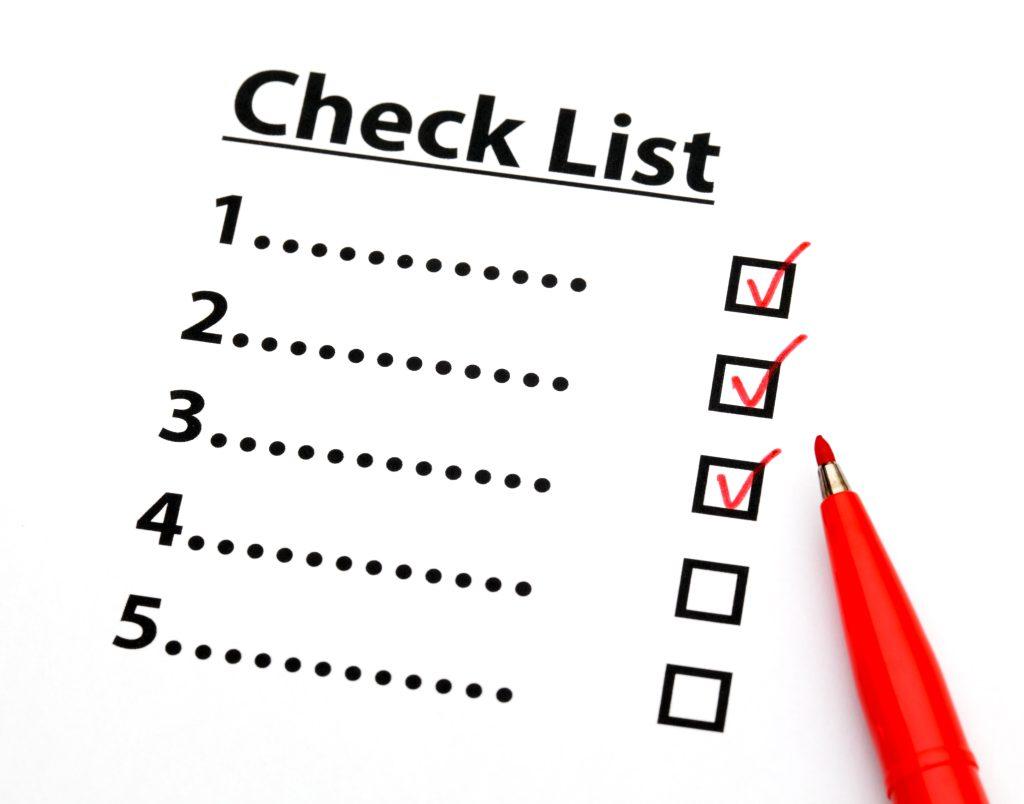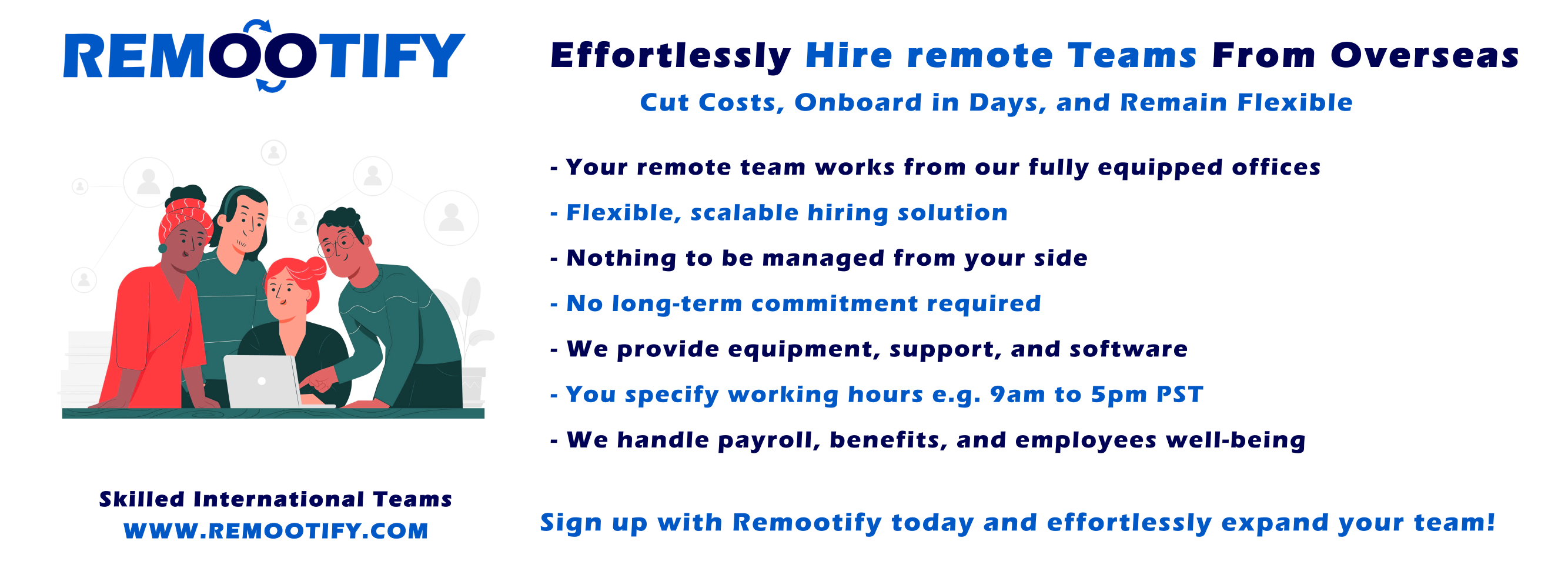Start hiring YOUR REMOTE TEAM, Today!
Enter your information below to start a discussion with one of our team members!

The surge in remote work has reshaped the way we operate professionally. In this context, the significance of adeptly onboarding remote employees cannot be overstated.
This article sets out to explore the realm of remote employee onboarding, offering a crucial checklist to ensure a smooth and productive integration process.
1. Remote Employee Onboarding Checklist Prep: Setting the Stage
A. Creating a Structured Onboarding Plan
- Setting Clear Objectives and Goals
- Clearly define what you want the new remote employee to achieve during their onboarding period.
- Align these objectives with the employee’s role and the company’s overall goals.
- Provide measurable goals to track progress and success.
- Identifying Key Stakeholders and Responsibilities
- Determine who will be responsible for different aspects of the onboarding process, such as HR, the hiring manager, IT support, and team leads.
- Allocate specific tasks to each stakeholder to ensure a smooth and coordinated onboarding experience.
- Clarify the roles and responsibilities of these stakeholders to avoid confusion.
B. Assembling Necessary Tools and Resources
- Hardware and Software Requirements
- Communicate the hardware specifications required for the remote employee’s role, such as computer specifications, peripherals, and any special equipment.
- Provide a detailed list of software applications they need to install, licenses, and any necessary setup instructions.
- Offer guidance on setting up personal devices for company use, if applicable.
- Access to Company Systems and Data
- Plan how the remote employee will gain access to company systems, databases, and other resources.
- Ensure they have the necessary login credentials, security protocols, and instructions for accessing these resources securely.
- Consider using secure authentication methods like two-factor authentication (2FA) to enhance data security.
- Communication Platforms
- Introduce the remote employee to the communication tools used in the company, such as email clients, instant messaging platforms, and video conferencing software.
- Provide guidelines on proper etiquette, best practices, and preferred communication channels for different types of interactions.
- Offer resources or training sessions to help them become proficient in using these platforms.
Remember, a well-prepared onboarding plan sets the foundation for a successful remote employee integration into your company’s workflow.
Providing comprehensive information, resources, and support during this phase will lead to increased productivity and a positive employee experience.
2. Building an Effective Remote Employee Onboarding Checklist
A. Pre-arrival Tasks
- Setting Up Email and Communication Accounts
- As part of the remote employee onboarding checklist, create the remote employee’s email account in advance of their official start date.
- Ensure that the employee receives clear instructions on how to access and configure their email account, taking into account any specific settings or security measures required for remote work.
- Grant access to the necessary communication tools, such as messaging platforms, and make sure the remote employee is added to relevant contact lists and groups.
- Sharing Company Policies and Handbooks
- Incorporate this task into the remote employee onboarding checklist by providing a comprehensive package of company policies, including those related to remote work.
- Send documents that outline the employee code of conduct, data privacy regulations, and any other relevant policies.
- Ensure access to the remote employee handbook, a key resource that familiarizes the employee with company guidelines, procedures, and overall expectations.
- Introducing the Company Culture and Values
- Integrate this crucial step into the remote employee onboarding checklist by offering resources that provide insights into the company’s mission, vision, and core values.
- Utilize materials such as videos, presentations, or written documents to convey how these values translate into day-to-day work scenarios.
- Emphasize the importance of aligning the remote employee’s work behavior with the company’s culture and values, even in the remote work environment.
The meticulous execution of these pre-arrival tasks, as part of the broader remote employee onboarding checklist, establishes a strong basis for the remote employee’s successful integration into the company’s operations and culture.
B. Arrival Day
- Warm Welcome from Leadership
- As part of the remote employee onboarding checklist, initiate the onboarding process with a heartfelt welcome message from company leadership.
- Convey the employee’s significance to the organization, express enthusiasm about their role, and underscore the value of their contributions.
- This thoughtful step fosters a strong sense of connection and motivation from the very beginning.
- IT Support for Equipment Setup
- On the day of arrival outlined in the remote employee onboarding checklist, ensure that dedicated IT support is available to assist the remote employee in setting up their equipment seamlessly.
- Verify the proper functioning of all essential hardware and software components, including computers, peripherals, and specialized tools pertinent to their role.
- Swiftly address any technical glitches to prevent disruptions to the employee’s productivity.
- Introduction to the Team and Colleagues
- Integral to the remote employee onboarding checklist, orchestrate introductions between the new remote employee and their team members, colleagues, and other key individuals.
- Coordinate virtual gatherings, team calls, activities, or informal sessions that enable remote employees to familiarize themselves with their new team.
- Nurture an environment of open dialogue and collaborative spirit, laying the foundation for effective remote teamwork.
The carefully planned activities of the arrival day, meticulously incorporated into the remote employee onboarding checklist, establish a positive and productive trajectory for the new employee’s integration into the company.
C. First Week
- Detailed Job Role and Responsibilities Overview
- During the remote employee onboarding checklist’s first week, provide an in-depth introduction to the new employee’s job role and responsibilities.
- Clearly outline their tasks, projects, and expected contributions to the team.
- Address any questions or concerns to ensure a comprehensive understanding of their role’s scope.
- Training on Company Tools and Software
- As a crucial component of the remote employee onboarding checklist, conduct comprehensive training sessions on the various tools and software applications utilized within the company.
- Ensure the remote employee gains proficiency in using these tools for efficient workflow, collaboration, and communication.
- Offer resources and support to address any challenges that may arise during the learning process.
3. Initial Goal-Setting and Performance Expectations
- Utilize the remote employee onboarding checklist to initiate the process of goal-setting and performance expectations within the first week.
- Collaborate with remote employees to define short-term objectives that align with their role and contribute to larger company goals.
- Clearly communicate performance expectations, measurement criteria, and feedback mechanisms to facilitate progress and growth.
The activities orchestrated during the first week, thoughtfully integrated into the remote employee onboarding checklist, establish a solid foundation for the remote employee’s role comprehension, technical acumen, and alignment with company goals.
D. First month
- Regular Check-ins with the Manager and Team
- As an integral part of the remote employee onboarding checklist’s first month, establish a rhythm of regular check-in meetings between the new employee and their manager and team.
- These check-ins provide opportunities to discuss progress, address questions, and offer guidance.
- Maintain open communication channels to ensure the remote employee feels supported and connected.
- Assigned Buddy or Mentor for Guidance
- Incorporate into the remote employee onboarding checklist the assignment of a buddy or mentor to guide and support the new employee.
- The buddy/mentor provides insights into company culture, workflows, and unwritten norms, aiding the remote employee’s acclimatization.
- Encourage the development of a mentoring relationship that fosters learning and growth.
- Deeper Dive into Company Projects and Processes
- Utilize the remote employee onboarding checklist to facilitate a deeper exploration of company projects and processes during the first month.
- Involve the remote employees in projects that align with their role, allowing them to contribute meaningfully.
- Provide context on how their work fits into the broader company landscape, enhancing their understanding and engagement.
The initiatives undertaken during the first month, seamlessly integrated into the remote employee onboarding checklist, further the remote employee’s integration, engagement, and assimilation into the company’s operations and culture.
3. Communication and Collaboration
A. Establishing Effective Communication Channels
- Synchronous vs. Asynchronous Communication
- As part of the remote employee onboarding checklist’s focus on communication, clarify the distinction between synchronous (real-time) and asynchronous (delayed) communication.
- Guide the remote employee in identifying situations suitable for each mode, enhancing efficiency and minimizing disruptions.
- Choosing the Right Communication Tools
- Integrate into the remote employee onboarding checklist guidance on selecting appropriate communication tools.
- Discuss the purpose and features of tools such as chat platforms, video conferencing, and email, emphasizing their role in effective remote collaboration.
B. Fostering Collaboration in a Virtual Environment
- Virtual Team-Building Activities
- As part of the remote employee onboarding checklist’s emphasis on collaboration, organize virtual team-building activities.
- Engage the remote employee in icebreakers, team challenges, or social events that cultivate connections and camaraderie despite the physical distance.
3. Encouraging Knowledge Sharing and Idea Exchange
- Utilize the remote employee onboarding checklist to promote a culture of knowledge sharing and idea exchange.
- Encourage the remote employee to contribute insights, questions, and innovative suggestions to team discussions and collaboration platforms.
The strategic approach outlined in the remote employee onboarding checklist toward communication and collaboration equips the new employee with the skills and tools needed to thrive in a remote work environment.
4. Navigating Company Culture Remotely
A. Communicating Company Values and Mission
- Incorporate Company Values into Daily Work
- As an essential aspect of the remote employee onboarding checklist, guide the remote employee on how to integrate company values into their daily tasks.
- Discuss how these values guide decision-making and interactions within the company, even in a remote setting.
B. Remote Socialization and Team Bonding
- Virtual Coffee Chats and Informal Gatherings
- As part of the remote employee onboarding checklist, encourage remote socialization through virtual coffee chats, lunch breaks, or casual catch-up sessions.
- Facilitate opportunities for informal conversations that foster connections beyond work-related discussions.
- Team-Building Exercises and Games
- Integrate team-building exercises and games into the remote employee onboarding checklist.
- These activities promote team bonding, collaboration, and shared experiences, contributing to a positive remote work culture.
C. Recognizing and Celebrating Achievements Virtually
- Virtual Recognition and Applause
- As outlined in the remote employee onboarding checklist, establish a system for recognizing and celebrating remote employee achievements.
- Utilize virtual platforms to publicly acknowledge accomplishments, whether big or small, fostering a sense of appreciation.
The deliberate actions detailed in the remote employee onboarding checklist to navigate company culture remotely contribute to a cohesive and engaged remote workforce that remains aligned with the company’s values and mission.
5. Remote Work Productivity Tips
A. Setting Up a Productive Remote Workspace
- Ergonomics and Comfort
- As part of the remote employee onboarding checklist, guide the remote employee in setting up an ergonomic workspace that promotes comfort and minimizes strain.
- Advise on chair and desk height, monitor positioning, and proper lighting to support long hours of work.
B. Time Management and Avoiding Burnout
- Establishing a Routine
- Integrate time management practices into the remote employee onboarding checklist, encouraging the remote employee to establish a structured daily routine.
- Emphasize setting clear work hours, breaks, and designated time for relaxation.
C. Staying Motivated and Focused
- Setting Goals and Rewards
- Utilize the remote employee onboarding checklist to suggest goal-setting strategies that maintain motivation.
- Guide the remote employee in setting achievable milestones and incorporating rewards upon accomplishment.
D. Overcoming Common Remote Work Challenges
- Effective Communication
- As part of the remote employee onboarding checklist, provide guidance on maintaining clear and consistent communication with colleagues and managers.
- Share tips for active listening and using appropriate communication channels.
6. Feedback and Performance Evaluation
A. Establishing a Feedback-Rich Culture
- Open Communication Channels
- As a cornerstone of the remote employee onboarding checklist, emphasize the importance of open and constructive feedback within the company.
- Encourage the remote employee to actively seek and provide feedback to colleagues and managers.
B. Regular Performance Check-ins and Evaluations
- Scheduled Performance Reviews
- Incorporate regular performance check-ins and evaluations into the remote employee onboarding checklist.
- Outline the schedule for formal reviews, during which accomplishments, challenges, and growth opportunities are discussed.
C. Recognizing and Addressing Remote-Specific Performance Issues
- Remote Work Challenges and Solutions
- As part of the remote employee onboarding checklist, address potential performance challenges unique to remote work.
- Provide guidance on troubleshooting connectivity issues, time zone differences, and other remote-specific obstacles.
The strategic approaches outlined in the remote employee onboarding checklist for feedback and performance evaluation ensure a continuous feedback loop that supports the remote employee’s growth, development, and overall success within the company.
7. Continuous Learning and Development
A. Providing Opportunities for Skill Enhancement
- Identifying Skill Gaps:
- As a fundamental step in the remote employee onboarding checklist, collaborate with the remote employee to identify skill gaps relevant to their role.
- Offer resources, courses, or materials to bridge these gaps and enhance their skill set.
B. Encouraging Participation in Virtual Workshops and Webinars
- Virtual Learning Opportunities:
- Integrate participation in virtual workshops and webinars into the remote employee onboarding checklist.
- Share information about relevant industry events and platforms that offer valuable learning experiences.
C. Supporting Career Growth within a Remote Setting
- Career Path Discussions:
- Utilize the remote employee onboarding checklist to initiate discussions about the remote employee’s career aspirations and goals.
- Provide insights into potential growth paths within the company’s remote work structure.ù
The deliberate approaches outlined in the remote employee onboarding checklist for continuous learning and development empower remote employees to enhance their skills, stay updated, and nurture their career growth within the context of remote work.
8. Legal and Security Considerations
A. Data Security and Privacy Measures
- Data Handling Guidelines
- As a crucial step in the remote employee onboarding checklist, communicate data security and privacy guidelines.
- Emphasize the importance of safeguarding sensitive information, following encryption protocols, and adhering to data protection laws.
B. Remote Work Policies and Compliance
- Remote Work Policy Overview
- Integrate an overview of remote work policies and compliance requirements into the remote employee onboarding checklist.
- Explain policies related to work hours, break times, reporting structures, and code of conduct in a remote work environment.
C. Addressing Remote Employee Rights and Responsibilities
- Remote Work Agreement Review
- Utilize the remote employee onboarding checklist to review the remote work agreement, ensuring the remote employee understands their rights and responsibilities.
- Clarify aspects such as compensation, benefits, and expectations for remote work conduct.
The meticulous considerations detailed in the remote employee onboarding checklist for legal and security matters establish a framework that prioritizes data protection, policy adherence, and a comprehensive understanding of remote work rights and responsibilities.
—
Conclusion
Incorporating these checklist elements ensures a smooth transition for new remote employees, fostering growth, collaboration, and success.
This approach promotes a positive onboarding experience and long-term integration within the remote work environment.
—
FAQs
Why is remote employee onboarding important?
Remote employee onboarding is crucial because the surge in remote work has reshaped professional operations. Adept onboarding ensures smooth integration and productivity of remote employees.
What should a structured onboarding plan include?
A structured onboarding plan involves setting clear objectives, aligning goals with roles and company goals, and assigning responsibilities to key stakeholders.
What tools and resources should be provided to remote employees during onboarding?
Remote employees should receive hardware and software requirements, access to company systems and data, and introduction to communication platforms.
Why is a well-prepared onboarding plan essential for remote employees?
A well-prepared onboarding plan sets the foundation for successful remote employee integration, productivity, and a positive employee experience.





